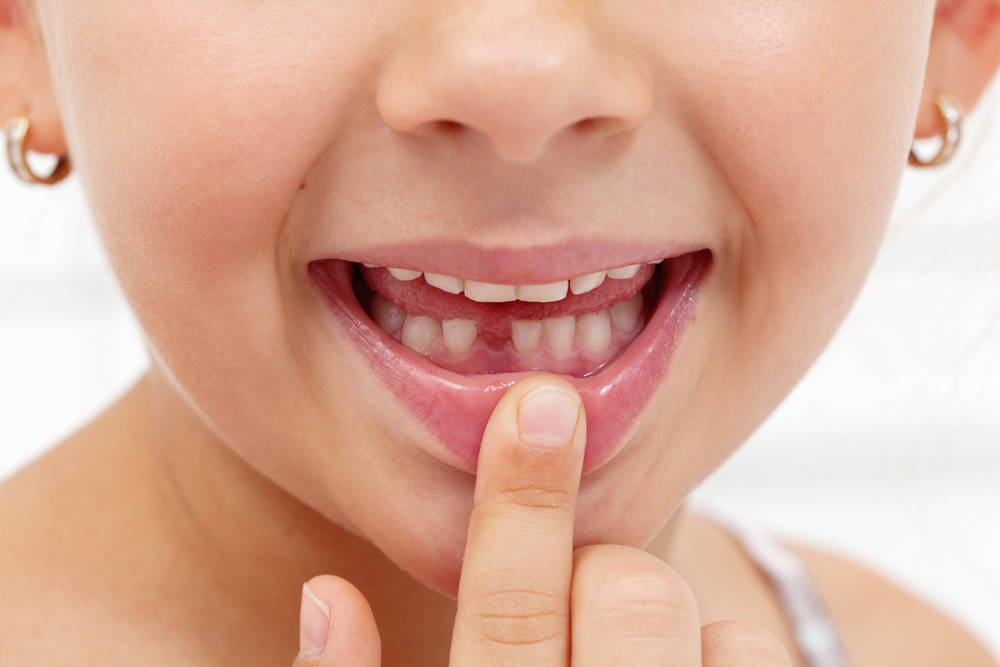What’s The Best Way to Floss
We all know we should floss, but it can be tough. Part of this is because flossing can feel like an extra task in an already busy day, but it...

Your child’s first loose baby tooth is a significant milestone for both of you. Parents and children alike both love showing off a big toothless grin, and a loose tooth also means the Tooth Fairy’s first visit is not far behind!
Feel entirely prepared from the beginning with Dr. Hoffman’s parent’s guide to losing baby teeth!
You can expect your child to begin losing their first set of baby teeth around the age of 6 years old. As with many things, all children are different, and your child may be younger or older when they begin to lose teeth. You can also expect for your child to generally lose their baby teeth in the same order that they came in, starting with the lower front teeth, and then the upper front teeth following.
A baby tooth does not typically loosen until the permanent tooth under it has started to push the baby tooth out of the shared socket. Once it begins to loosen, it can take up to a few weeks for the tooth to fall out.
By the age of 6 or 7, your child has likely seen a fellow friend or classmate who has lost a tooth. Loose baby teeth can be a source of pride, curiosity, or even concern for some children. We always recommend explaining to your child what is going to happen, so they are mentally prepared, and there are no surprises. It’s common for kids to be fearful of potential pain associated with losing a tooth, so be sure to give them reassurance and support when necessary.
A loose baby tooth is also a great time to explain that there will be a temporary hole left behind and that the permanent tooth will not immediately take its place. As parents, those toothless photos are cherished memories, so preparing your little one for what is to come will ensure it’s a positive experience for all.
When your child comes to you wiggling a tooth that is loose, it is a true milestone in both of your lives.
When presented with a loose baby tooth:
Share your excitement and enthusiasm with your child, so they understand that this is a joyous milestone
Encourage your child to keep gently wiggling the tooth to loosen it until it falls out naturally
Remind them to wash their hands frequently to keep germs out of their mouth while wiggling
Try to let the tooth fall out naturally to limit pain, bleeding, and risk of infection
Don’t attempt to yank the tooth out right away without it being loose and ready to come out
Contact your dentist immediately if your child is in significant pain and discomfort
A loose tooth can be a built-in activity for your child to play with, but it can also become bothersome at a certain point. It is always best to let a tooth fall out naturally while encouraging the tooth to become loose enough to the point of being able to remove it.
Encourage the loose tooth to fall out naturally by:
Chewing on hard foods like apples and carrot sticks
Wiggle the tooth with clean fingers
Show your child how to use their tongue as a tool to wiggle the tooth
Use gauze pads or clean tissue to wiggle the tooth while attempting to remove it
Once the tooth is almost completely loose, give the tooth a slight twist to release any lingering root hold
When your child loses a baby tooth, it means that a permanent adult tooth is not far behind. Beginning to lose teeth is a great reminder to reinforce excellent oral hygiene care. Make sure your child is brushing their teeth at least twice per day and using proper cleaning techniques. Great oral care habits also include regular trips to the dentist! If your child is due for a check-up, call Hoffman Dental Care today to schedule an appointment!